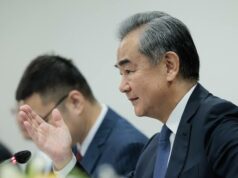How Akhnoor got saved in 1971?
India’s Special Forces Story : Untold Exploits of 9 Para SF
By
Colonel Awadhesh Kumar, Special Forces Veteran
A BRIDGE TOO NEAR AND A BRIDGE TOO FAR: A TALE OF GROUP CARIAPPA AND SABHARWAL
First Blood

1971 war
Naik Ram Singh, a Services Level Boxing Champ, always full of stamina was now feeling absolutely drained and tired and so was Lance Naik Hoshiar Singh, himself a very good Cross Country runner. The duo were responsible for manning one of the two Medium Machine Guns or the MMG of Alpha Group, 9 PARACHUTE COMMANDO. The entire night of 04 – 05 December 1971 had been a real bad dream or rather pure hell. Spread over the night there had been three fierce attempts by the Pakis to decimate the Commandos. Each time, it started with intense earth shattering artillery barrage which seemed to last for eternity and was followed by an infantry assault. By the end of first artillery bombardment, both the machine gunners were completely aware of not only the 206 bones presently existing within their bodies but even of the additional 64 which between childhood and adolescence had fused together with neighbouring ones. Luckily the buzzing ears made the rest of the world just a vibration and thus the blood curdling war cry of the assaulting enemy made no impression. At the end of each barrage, the pair just stood up inside the trench, nonchalantly manned their MMG and opened up when the Pakis came within the killing zone.
Unmindful of the numbing cold and incoming bullets, the Machine Gunners created a wall of fire and each time the assault was beaten back. As ammunition had not been a problem, they just concentrated on the enemy and the periodic changing of the gun barrel as per the taught drill.
They were unaware of the fact that they had fired their complete first line and four second lines (these are the accounting units for storage, supply and expenditure of ammunition) that is 12000 rounds. Now it was nearly 0500h, morning of 05 December 71 and Ram Singh desperately wanted to have some hot tea.

Pallanwalla Village of Chamb….Jaurian Area
As if waiting for the demand, Hoshiara, as he was fondly called by all, got busy low down in the trench and in no time had two large steaming mugs of hot tea. The hot brew got distributed into 5 mugs / steel glasses / mess tins when he spotted Captain Macarius and his Radio Operator Trilok Chand coming from the Southern side and simultaneously, BHM Bahal Chand joining from the Northern flank. The tea was a morale booster for all. After his STAND TO inspection the No 1 TEAM Commander went back towards his Team HQ trenches. The Battalion Havildar Major, who had recently been appointed 2nd In Command of No 1 TEAM, after passing his examinations for promotion to the ranks of Junior Commissioned Officer, proceeded back to the three trenches on the Northern flank of Alpha Group. These were manned by the fourth Sub Team of No 1 TEAM.
About 75 to 100 m further north were the 3 tanks of DECCAN HORSE. Right behind the tanks about 800m in the depth was an artillery battery comprising 06 guns of 216 Medium Regiment. To the South of the MMG trench were rest of No 1 TEAM and further South, No 2 and No 3 TEAM extending towards the CHAMB BRIDGE (on road Chamb – Jaurian) on River Munnawar Tawi. Behind No2 TEAM in the depth was the GROUP HQ along with the elements of Battalion HQ of 9. Further behind in the depth around 1200m was 39 Medium Regiment. At this point of time, this stand-alone force located at the junction of Sukh Tao Nala and Munnawar Tawi was the only representative of Govt of India left around. They had been repeatedly requesting the advancing 4 Azad Kashmir Brigade of Pakistan, milling on the western bank of Tawi since night 04 – 05 December, to reconsider their decision to advance along CHAMB — JAURIAN –AKHNOOR ROAD towards Akhnoor. However the Pakis seemed to be either deaf or inconsiderate.
To the uninitiated, STAND TO is a readiness drill executed by troops in defence when expecting an attack from the enemy. The pre-dawn STAND TO is an important routine because psychologically as dawn approaches, the ingrained fear of the darkness imposed over eons during human evolution tends to reduce and one lets down his guards. Therefore it is the best time to attack an enemy citadel. Dawn was still about 20 minutes away though things near and far had commenced acquiring definite shapes.
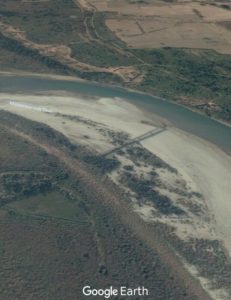
The Bridge Too Near on Munnawar Tawi……was blown up partially in1971
As the BHM was nearing the Sub Team trenches, he happened to glance towards the Eastern side, in the direction of the guns of 216 Medium Battery. He spotted a group of men, walking towards the tanks. They must be the gunners, but why so many have left their gun position all at once ? Then suddenly words of Capt Mac flashed thru…. during the last assault, a considerable number of Pakistanis were able to pass thru the gap between the No2 and and No 3 Teams, how many? not known. Bahal Chand quickly lowered himself into his trench and hissed to the Sub Team to be on the alert. The advancing group of men on seeing the tanks first stopped and then formed an assault line, totally oblivious of the presence of the watching para commandos. Now they could be counted all eight of them. By the time they must have taken 50 steps, it was clear by the light of the dawn that they were Pakis.
Suddenly with loud clanking sound the three tanks closed their cupolas though the tank men remained clueless about this threat from the rear. Throughout the night the Cavalry had fought shoulder to shoulder with the Commandos and both had been able to ensure that their CHAMB WALL remained intact. This had been made possible only because of the uninterrupted accurate fire support provided by the brave Gunners located right behind them. During each lull in the battle, the Sub Team had ensured contact with the nearest tank. As part of the STAND TO, a buddy patrol had even gone to the nearest tank. The tank men had discussed their apprehension of the noise emanating from the tall sarkanda grove about 800m in front of the tanks towards North West. Now finally the Tank Troop Commander had decided to become battle ready once again by ordering the closure of the cupolas.
With loud yells, they just could not help it, the 8 Pakis climbed onto the tank nearest to the Commandos, looking for an opening to throw in grenades. Seeing this the BHM ordered the entire Sub Team to bring down fire on the tank itself. The heavy volume of fire simply decimated the 8 fully exposed men.
Now the radio set started crackling. First was Capt Macarius asking for the situation report. Next call comes from the Group Commander. Less the 30 minutes later Capt Mac came running to his Sub Team on the Northern flank to brief BHM Bahal Chand. The BHM was to take the Sub Team along with the MMG Detachment and move to area BROKEN GROUND about 400m in front and bit to the right. The Tank Troop Commander too was briefed on radio.
BHM and his party wasted no time in making a dash for the new location. They had not even deployed their weapons properly when they heard loud cries of ALLAH O AKBAR from within the the sarkandas. The three tanks started firing directly into the Sarkandas. With their hearts at maximum palpitation due to the sprint, certainly not due to fear, everyone waited with their fingers on the trigger. Men of 13 AZAD KASHMIR Battalion, eager to liberate some more areas of J&K from the Indian Union, obliged the para commandos for the fourth time. As the assault line emerged out of the sarkandas moving towards Alpha Group, heavy fire was brought down once again by the MMG from this unsuspected flank…. area Broken Ground. Heavy battle ensued.
Nk Ram Singh shouted a warning to Hoshiara to ready a new belt of MMG ammunition. There was no response even when the ON WEAPON belt finished off. He looked down and saw Hoshiara resting his forehead on an ammunition box. How can you go off to sleep with this much noise? he scolded. Then as he shook him, L/ Nk Hoshiar Singh’s head just rolled to one side, he was lifeless. Without a second glance Nk Ram Singh came to a sitting position to place a new ammunition belt on the MMG and began firing. Suddenly as if he was in the boxing arena and the opponent had punched him all over. His shoulder went numb and this made him very angry.
Two of the charging enemy had nearly reached his position with rest following, when Bahal Chand, trying to place a new magazine on his rifle looked desperately towards the machine gunners. He saw Ram Singh removing the MMG from its tripod and then standing up. Now Ram Singh was yelling and firing at the Charging enemy in true Rambo style. Then as a reflex action, Bahal Chand too emptied his entire magazine. The tall athletic, senior most Non Commissioned Officer of the battalion suddenly found himself knocked down to the ground. In slow motion, he saw Ram Singh too going down along with the last of the enemy and he lost consciousness.
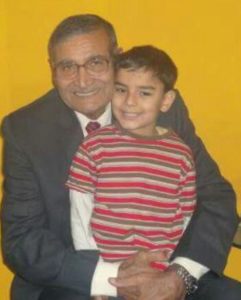
Captain Bahal Chand
When he came back to his senses, BHM Bahal Chand found himself being bandaged by Paratrooper Trilok Chand with a shell dressing. Then he saw Group Havildar Major Jagan Nath picking up the MMG and finally heard Capt Mac and Subedar Duni Chand, the Team 2IC, asking for a stretcher. In a daze he got up and volunteered to walk but fell down. Sometime later he found himself lying in a trench behind the Group HQ, fully medicated and bandaged for further evacuation.
The enemy had finally been vanquished and chased across to the Western Banks of Munnawar Tawi, leaving behind more than nine scores dead on the Eastern Bank. The Commanding Officer of 13 AZAD KASHMIR was himself looking for Azadi as a Prisoner of War along with nine of his men. Five years after its raising 9 PARA COMMANDO was now fully baptized by fire.
PART II
The Route to The Jugular Vein
There is a saying that once war is over, then there is no dearth of brave men. In line with this, a Pakistani Brigadier had claimed, while sipping a mug of ale in a London pub much after the War, that had he been given a free hand then in 1965, he would have been in Akhnoor through Chamb within 24 h, in Jammu in next 12h and then onto Pathankot in next 24h. Though an obvious tall claim, it highlights the importance of CHAMB. Another analysis, which may be plausible, claims that it was OPERATION VENUS planned by GHQ at Pindi to strike Akhnoor through Chamb, thus cutting off the entire POONCH Valley and then pose a major threat to Jammu/ Kathua/ Pathankot communication lines, in effect cut off entire J&K and may be even Ladakh, which in 1948 motivated Nehru in requesting for a ceasefire at the UN Security Council. Indians wanted to avoid any major battle opposite their vital communication links emanating from Jammu as under:
• Jammu—-Samba—-Kathua—-Hiranagar—-Pathankot
• Jammu—-Udhampur—-Doda
• Jammu—-Udhampur—-Srinagar—-Leh
• Jammu—-Akhnoor—-Naushera—-Rajouri—-Poonch
• Jammu—-Akhnoor—-Jaurian—-Chamb
These days we have developed alternate routes and have large fleets of both medium and utility helicopters. There are adequate heavy and medium transport aircraft fleets with extremely accurate means of aerial delivery of both men and material. Most important (since KARGIL), our country has begun showing the WILL to defend our SOVEREIGNTY. So a tactical setback, here and there may mean nothing much and we can wait for its recovery. However in 1948, 1965 and 1971, loss of Jammu would have been a strategic disaster. Further if Jammu was the heart, then the jugular vein was the BRIDGE at Akhnoor over the extremely fast flowing Chenab. And for the Pakis the route to this jugular vein was from Chamb–Jaurian, though shortest route was through Chicken Neck Salient.
In 1965, Yahya Khan had been unable to organize the promised breakfast on the Akhnoor Bridge. It remained a BRIDGE TOO FAR. In Spite of overwhelming superiority, OPERATION GRANDSLAM was overall a failure. Even in 1971 though Pakis were able to capture 120 Sq Km of Chamb, this bridge still remained too far. Not because it was heavily defended (in fact it was totally defence less) but due to the fact that a group of men with grit got accidently deployed, TOO NEAR A BRIDGE on the junction of Munnawar Tawi and Sukhtao Nullah.
The first obstacle to the Paki Offensive on night 03–04 December came in the form of 5 SIKH with the backing of 12 Field Regiment. The Sardars simply refused to pay any heed to the numerical and firepower superiority of the enemy. Their valour and sacrifice against heavy odds, quite well documented, gained vital 24 hours for the Indian Army. Orders were being issued and cancelled on the Indian side every minute and there was utter chaos. However Alpha Group of 9 PARA COMMANDO, found itself at this bridge location on 04 December around 1830 h based on a direct order given by the General Officer Commanding (GOC) to Lt Col O P Sabharwal, SM, Commanding Officer (CO) 9. The CO had accompanied General Jaswant Singh to HQ 191 Infantry Brigade in Chamb on 03 December. As the attack commenced, they had to rush back to the Ad Hoc Advance Divisional HQ. While crossing the Chamb Bridge, the GOC must have realized its importance. He turned to CO 9 and said “Sabu, you will defend this bridge for me no matter what happens“. Having rehearsed day in and day out for missions behind the enemy lines, here were the bewildered para commandos on a purely infantry role, without RCLs, 81 MM Mortars, mines, wire obstacles etc or without the requisite practice and the mindset to give battle as a Company Defended Locality. Nevertheless they rose to the occasion.
Chamb–Jaurian Sector is bounded by
• Cease Fire Line from Dewa to Burjeal in the West
• International Boundary from Burjeal to River Chenab in the South
• Various branches of Chenab from Phuklian salient to Akhnoor in the South and South West
• Range of hills (1000 ft to 3000 ft) in the North running in East – West direction
Relative height inside the Sector varies from 40ft to 80 ft which is militarily significant in terms of observation and field of fire. The Chamb village itself is dominated by two ridge lines …Mandiala North and Mandiala South. Then there is Munnawar Wali Tawi about 7 to 8 km from the border, flowing North to South into Chenab and roughly dividing the Sector into two halves. Finally, in 1971, there were two Roads in the Sector….. Akhnoor-Jaurian-Chamb and Akhnoor-Kalit-Mandiala.
The Thrust For The Jugular
By Oct 71 it was quite clear that 26 Infantry Division would remain in defensive in the Jammu Sector and offensive if any would be by 10 Infantry Division in Chamb Sector. However somehow the plans got based on a highly erroneous assumption that commencement of offensive in Chamb would by itself ensure the defence of the Sector. This led to totally disregarding the prime task of defence of Chamb. With the offensive in view, large gaps were left in the defensive minefields and there were no deployments to protect Mandiala – Deva approach. 191 Infantry Brigade with four battalions of infantry was defending the area West of Tawi and 28 Infantry Brigade also West of Tawi was defending the hill sub sector. Slowly 191 Brigade got into a posture where instead of being totally in the defensive, they would be facilitating the launch of offensive by 52 Brigade and 68 Brigade and an independent Armoured Brigade, all concentrated, east of Tawi well in depth, for their offensive tasks.
On 03 December 71, Major General Jaswant Singh, GOC, 10 Infantry Division decided to move to his Ad Hoc Advance Divisional HQ at Pallanwala. This HQ was still not fully established. Move of Main HQ to this location was planned to commence only after last light on 03 December. Then from Pallanwala, GOC along with CO, 9 PARA COMMANDO had gone to HQ 191 Brigade for a briefing on the latest situation. After the briefing in the evening, drinks were offered by Brigadier R K Jasbir Singh. As everyone raised their glasses and said Cheers, reply was given by Major General Iftikhar Janjua, GOC 23 Infantry Division of Pakistan in the form of a massive artillery bombardment. General Jaswant along with Sabu rushed back to Pallanwala. Just a day before, 15 Corps Commander had told him regarding cancellation of all offensive tasks pertaining to the Para Commando Group. Thus while crossing the Chamb Bridge, Jaswant Singh entrusted its defence at all cost, to Sabu.
General Janjua’s plan was to first secure two lodgements of minimum 3 km radius each, across the Ceasefire Line with two brigades by first light 04 December and then break out with armour to capture Chamb Bridge on night 04 – 05 December with a lodgment across. Also secure, as much length of the western bank of Tawi, as possible and then on 5th morning breakout for Akhnoor Bridge. Like all military plans, it went for a six, once battle commenced. Nevertheless General Iftikhar achieved total surprise at both tactical and strategic level. Pakistani offensive must have required massive preparation in terms of forward dumping of ammunition & stores, forward deployment of artillery and preparation of gun positions, concentration of armour etc. However our Border Observation Posts, Forward Defended Localities, military intelligence, Signal intelligence, IB and RAW, all failed to detect the Pakistani Plan to reenact OP GRAND SLAM once again.
In contrast Pakistanis seemed to have very detailed information of our deployment in the entire sector, particularly West of Munnawar Tawi. The intensity and precision of their opening artillery fire over our defences, gun positions, Command Posts etc was amazing. In fact, as per information available to 23 Division and 4 Azad Kashmir Brigade, there was not even a single J & K Militia jawan guarding the Chamb Bridge on Tawi, near the Mandiala height and this was absolutely true……to their surprise this is where Alpha Group popped out of nowhere.
Thus with Iftikhar seizing the initiative, Jaswant was caught totally off balance. 10 Infantry Division was neither deployed for a defensive battle nor ready for an offensive. The GOC also remained virtually divorced from his Command for the crucial part of the first 24 hour of the battle due to non availability of a fully functional Divisional HQ. All this resulted in total chaos and took some time for the situation to stabilize. Then fate intervened and there were two lucky breaks for India… plonking of Cariappa’s boys at the Chamb bridge on 4 December evening and General Iftikhar getting killed in a helicopter crash on 9 December.
CHAPTER III
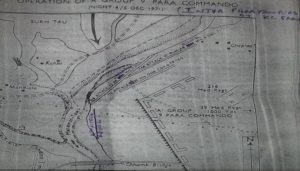
Alpha Group Deployment At The Bridge Site
Their faces blackened, weapons with round in chamber, the five Para Commandos were waiting for the watch to read 9. Outwardly calm, their nervousness was betrayed only by their index finger frequently checking the safety catch of their individual weapons. It is the waiting which is the worst enemy. At 2100h night 20 Nov 71, Col Sabharwal, Captain K C Padha, Havildar Waryam singh, L/Naik Karan Singh and Paratrooper Pushpinder Singh the radio operator, were to cross over into Pakistan for a confirmatory reconnaissance mission to gather evidence of Paki forward deployment for an intended offensive. They were presently huddled at a Listening Post ahead of one of our Forward Defended Localities.
A few days back, during a discussion at the Divisional HQ, Col Sabharwal had asserted that Pakis were preparing for an offensive. This was based on series of information gathered by a few deep penetration patrols from Alpha Group and from day/ night observations made by the para commandos from forward locations of 191 and 28 Brigades. In fact one such patrol led by Captain Macarius had gone inside Pak from BOKAN POST in the area of 5 ASSAM. It was this post where the first attack had come on night 03 December. Similar patrols had been led by Capt Padha and Lt Bist. Both GOC 10 Division and Commander 191 Brigade agreed with this assessment. However Lt General Sartaj Singh roared acidically “It’s all rubbish….. as the D DAY is approaching (he meant our own offensive) all of you are getting yellow “. There was complete silence. Then Col Sabharwal volunteered to himself lead a confirmatory patrol. This was agreed to by the Corps Commander. At 2045h, Ptr Pushpinder Singh handed over the handset of his radio set to the Patrol Leader Col Sabharwal. On the other end was TIGER 15 (Officer Commanding ALPHA GROUP) who just uttered one word….. the code for cancellation of the said patrol, received only a few minutes back from the HQ 15 Corps by Major M M A Cariappa, Group Commander Alpha Group.
Just after the Vijaydashmi celebrations in Oct 71, all three Groups of 9 PARA COMMANDO quietly moved out to their respective Divisional Sectors. Alpha Group under Major Muckatrira Muthanna Ashok Cariappa moved near to village Gigriyal in the 52 Infantry Brigade Area opposite Mandiala heights. Major Cariappa, a tall, well-built Coorgi, had the perfect image of a COMMANDO especially when he grew his mustaches (on and off he shaved them). He had been commissioned into 17 Parachute Field Artillery Regiment in 1963 and in 1970 had volunteered for 9 thus changing over to Infantry. He was an ace hockey player and as a Cadet had played for the National Defence Academy beating the then Indian Olympic Team. Though outwardly very stern looking, he was actually very kind hearted and popularly called in the unit as SENIOR. This had nothing to do with age or anything but because of the fact that ALPHA had another officer Captain M A Kariappa who perforce had to be nicknamed JUNIOR.

Brigadier Ashok Cariappa ” Senior”
Senior had measured me inch by inch, from head to toe and back and then covering his nameplate with his right palm asked “what’s my name…. full name…. find out by evening and let me know “. This was our first meeting in Aug 1978 in the Officer’s Mess of 9 at Tale Camp, Naushera. Just after completion of my probation, I had found myself as part of a column led by Captain A S Bist, climbing the mountains in the upper reaches of Rajouri District towards Budhal–Kandi. It was an Operation called OP DHAMAKA.
For nearly 10 days we moved around day and night in pouring rain and chilly weather conditions, with nothing much to eat, looking for infiltrators from across the border. Map reading, Navigation, battle drills, night movements in pitch darkness, Section and Platoon level tactics…. all those things which Indian Military Academy, Dehradun had tried to teach me in one year with partial success, got perfected within that short period. On returning back to Tale Camp, everyone welcomed us as if we were coming back from war. Then on entering the Officers Mess this meeting took place with our Second In Command …. SENIOR.. who had just returned from SC Course at Mhow. Next 2 or 3 weeks were really tough for me. I was just getting used to the fact that Major Tej Pathak, whose name had been more terrifying to IMA GCs than “GABBAR SINGH” was now my Group Commander or immediate boss and now this …. 2IC had landed from nowhere. Though from their point of view they were only trying to mould a new 2/Lt into a good Regimental Soldier.

Suddenly the whole unit was ordered to move to OP DHAMAKA area once again. I was to take out my first patrol, when message came that 2IC wanted a Copy Book Patrol Briefing …. it was back to IMA days. After the briefing came the bombshell that he would accompany the Patrol. Then it was my Group Commander Maj Tej who came to my rescue. As advised, being an operational patrol, as we set out I assumed full command. Terrain was really tough but we halted only at the pre-planned places or BOUNDS. Remember 2IC had come back after 3 months at Mhow, while physically I was at my peak. Within minutes of each halt, a glass of very good tasting tea use to be offered to the 2 IC, with a statement that the patrol had just prepared it. Actually the tea had been prepared in the Officers Mess as advised by Tej Pathak and was being smuggled in a flask. Senior must have guessed this but he never mentioned it. Nevertheless, after return of the patrol, from next day onwards, everyone started noticing that as far as 2IC was concerned, the new 2/ Lt could do no wrong. Later Senior moved out to command 1 BIHAR and at our request, with mustaches fully grown. Before getting promoted to Brigadier, he was also the Battalion Commander of CARIAPPA BN at IMA, l.p.same
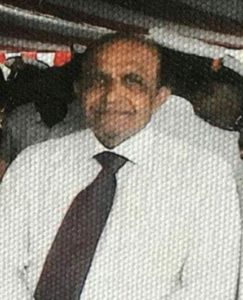
Colonel M A Kariappa
Junior was yet another example of one of the finest gifts to the Indian Army from the hills of Coorg. Simple, honest and full of humour who also tried to speak to his men in rapid fluent hindi with a coorgi accent. He was also fluent in Gurkhali and people say that he had made full use of it when the unit, prior to Tale Camp, was in Bakhlo, John Master’s land of Bugles and the Tiger. He was again a very good hockey player, a keen Angler and an ace Shikari. Though commissioned in Gurkhas had later volunteered for 2 PARA, from where he came to 9. Unlike a staunch Gurkha like Sabu, he loved his long hair and would never go for a crew cut. Periodically “request “would trickle down to him to have a haircut. He would never disobey an order and every time had his haircut in full public view. The barber always went through the entire hair cutting drill ensuring minimum 2 inches distance between junior’s hair and the Scissors. Another episode at Naushera which is worth mentioning is like this… Officers of a newly arrived battalion had been invited for Sunday lunch. As they trooped inside the Mess, I was there to welcome them. Same time, in walked Junior with his wife accompanied by Senior’s wife. He introduced himself as Major Kariappa, then turning to Senior’s wife, introduced her as Mrs Cariappa and finally introduced his wife as …. my wife. The visitors first looked at Junior, then at me and then at each other. Looks on their faces were indescribable. Situation was retrieved when Senior walked in from the bar and introduced himself. Yet another episode was when Junior (or was it Senior) planned the reception for newly commissioned 2/Lt Anil Narainan Nayer in september ‘78. Mrs Cariappa (senior) took on the role of a Lady Regimental Medical Officer, Junior became the Mess Waiter and I was made his Sahayak. Though Anil Nayer soon caught on and the fun ended. In 1971 when Captain M P Singh, the Group 2IC, permanently left for New Zealand the mantle fell on Junior.

Captain K C Padha in the battle field
Captain Keshav Chandra Padha was commissioned into the 4/11 Parachute Engineer Company of 50 (I) Parachute Brigade. This small sub unit has the distinction of producing the largest number of Generals for the Indian Army. Keshav must have been mad enough to leave such a prized unit and volunteer for a madder “unknown “entity of that time…9 PARA. Later he did become a General and commanded a Division. He was good in all sports and also became an excellent Golfer. Though while in the unit, however hard he tried his hand at badminton, his racquet and the shuttle could never meet.
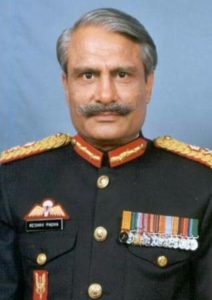
Maj Gen K C Padha, VSM
Regarding his physical fitness, In 1981, during the Annual Inspection carried out to certify the fitness of the unit for war, in the 2 Mile Run test for the battalion, he as a Group Commander was among the first 10 or so, in less than 12 minutes flat. Presently he was No 2 TEAM Commander.
However just on eve of war on 30 Nov 71 he had to be evacuated to Military Hospital at Jammu due to severe kidney infection. On 4th December night with 102° temperature, he managed to “escape “from MH and somehow reached Alpha Group at the Chamb Bridge site just before the 4th Paki assault on the morning of 5th December. Though perforce due to worsening conditions he again had to be evacuated along with BHM Bahal Chand and was back as “POW “of MH Jammu.
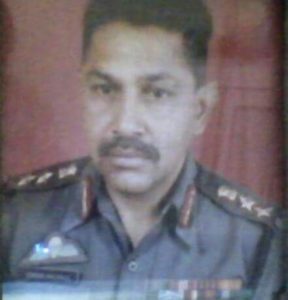
Colonel Mac
Captain Edmond Macarius commissioned in16 MADRAS in December 1968, belonged to Jhansi the land of Dhyan Chand and thus a natural hockey wizard who had represented IMA team, Army team and the SERVICES. With so many hockey aces, 9 PARA hockey team was unbeatable in 15 Corps. However when it came to intercompany matches no quarters were given by other Groups to ALPHA. These matches were more fiercely contested than even the Indo Pak hockey matches at the Olympics or the Asiad. Mac later commanded a MADRAS battalion.

Captain A S Bist
The No 3 TEAM Commander was 2/Lt Amarender Singh Bist, directly commissioned into 9 in December 1969. Being a Garhwali, he was a natural mountaineer and aced many a courses at High Altitude Warfare School, Gulmarg. Later on at HAWS ,he was the Chief Instructor too. Popularly known as Booby, though at times his coursemates also called him Laddu Bist. He was a very friendly person. Initially for OP DHAMAKA, I was to lead an independent column. Minutes before leaving Tale Camp in the evening for Rajouri, Major Tej Pathak had called me and my 2IC Naib Subedar Kishan Chand aside and had said …. Kishan is one of the best, a veteran of ‘ 71, always take his advice but always remember, you are the one who has to lead, also have full faith in your IMA training. Then turning to Kishan told him to take care of me. Yes, Kishan was one of the best. A few months later, he went and topped the Platoon Commanders Course at Belgaum. When the Commandant there enquired about the time spent on his pre course training, his reply was …17 years …. his entire service till then.
We reached Rajouri after last light. It seems that at the last minute, GOC 25 Infantry Division, Major General Narinder Singh (or was it my CO, Lt Col Arvinder Singh) must have lost his nerves on seeing a 51 Kg brand new 2/Lt and that too with spects about to lead an independent column. In the wee hours of next morning, GOC was there to see us off but to my surprise my column had been merged with other two. Orders had been passed in the night itself, after discussions between GOC and CO and naturally no one bothered to either consult me or even inform me !!! I got seconded to Captain Bist with whom in 10 days, gained confidence worth a decade. The other column was being led by Captain Roshan Lal, who had been my Probation Officer.

Major General O P Sabharwal, SM
Lt Col O P Sabharwal had been commissioned into Gurkhas and then had volunteered for 5 PARA on its raising. He had won his Sena Medal during the counterinsurgency operations in the North East. Having been the Brigade Major of elite 50 (I)Parachute Brigade, he had expected to get command of a para battalion. Instead he got a shock in Feb ‘71.
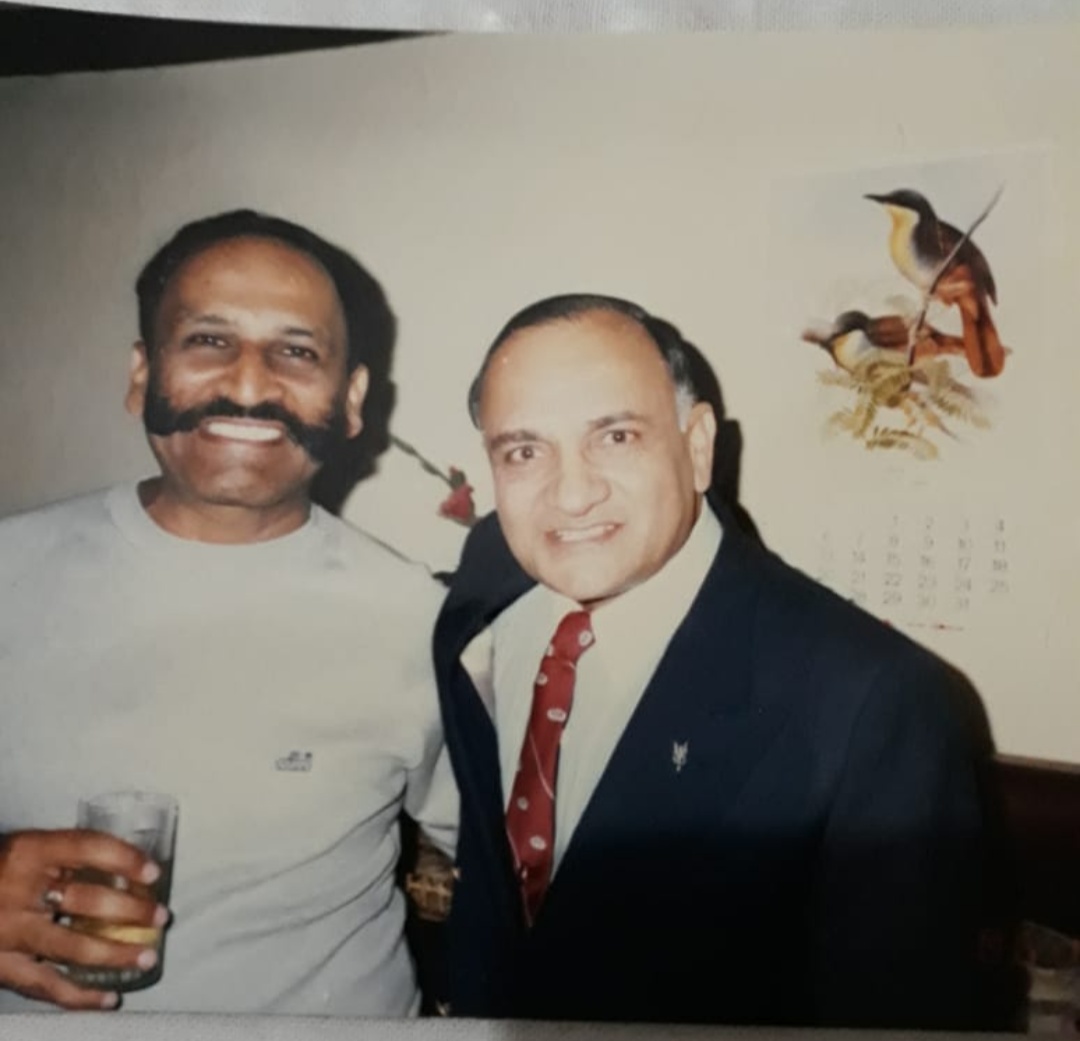
At that time 9 had the same reputation discipline wise, as that of WW II movie characters in Dirty Dozen and Devil’s Brigade. During the War 9 replicated the Commandos of the Devil’Brigade. Sabu had taken over the role of the Lt Col Robert T Frederick, from Lt Col GP Tripathi. Trips was the original Col Frederick in every sense. The herding together of the devils had been started by the founder of the clan Lt Col Megh Singh, Vir Chakra. Though at the beginning Sabu must have been thoroughly disappointed by this turn of event of getting command of 9. Within weeks arose an occasion when overnight the unit constructed a basha (hut) for a newly married officer to live in. 9 revealed its spirit and changed the new COs perception. Assimilation was complete when people started using the name Sabu. He must have had a tough time during the war, worrying all the time for his three groups deployed under three divisions from Jammu to Poonch. As Brigadier, he was our military attache in Washington for more than 3 years and on return went on to command a Division.
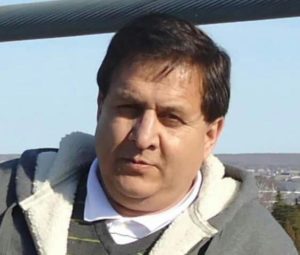
Colonel Ranjit Singh
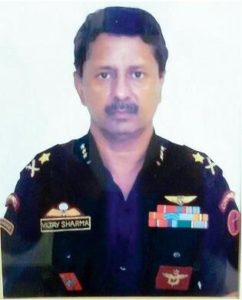
Late Major General Vijay Kumar Sharma,SM
At that point of time in 1971 there were about 125 more Commandos in Alpha Group who faded away as all soldiers eventually do. Col Ranjit Singh and Late Major General Vijay Kumar Sharma had joined Alpha soon after the war while Operation CACTUS LILLY was still on. Subedar Bishan Dass, the senior JCO of the Group, after the war became the Subedar Major of 9 and retired later as Hony Captain. However when I had joined the unit, many were still there. 2IC of No3 TEAM, Naib Subedar Sain Chand was now the Senior JCO of my Bravo Group. Whenever I was officiating as Group 2IC which even as 2/Lt was quite often or at times even Group Commander, Sain Chand would always brief me in detail regarding daily Battalion’s Orders, Group’s activities etc and what action he had planned to implement them. At the end of it he would always ask me …and now Sahib what are your orders…. which soon I realized could be only one thing…Carry on Sahib. It was his way to guide an officer less than half his age.
There was Havildar Puran Chand, SM, an ace mountaineer, pioneer of Siachen with Bull or Brigadier Narender Kumar, who then got a Regimental Commission and moved to 5 PARA. There was another Puran Singh who by ‘78 had turned into a National level gold medal winning boxer. He was unlucky to have missed the Delhi Asiad due to sickness , where his junior Girwar Singh of Alpha Group won the heavy weight boxing Silver Medal. Later he was my Senior JCO in the HQ team and still later Subedar Major with the Special Frontier Force. Pushpinder, the radio operator was by 1978, one of the outstanding young NCO. As a young Nb/ Sub in ‘86 he had been with me and Sanjay Thapa, when we had some real tough time while training in Zanskar mountains during VENTURE SERIES started by Tej Pathak. Later due to some temporary physical problem, he wanted to take premature retirement. Luckily as officiating 2IC of the unit I could persuade him to reconsider. He went on to become Subedar Major of the unit and retire with Honorary Rank of Captain. BHM Bahal Chand too became a Subedar Major, soon got a Regimental Commission and served with 6 PARA before retiring as a Captain.
CHAPTER IV
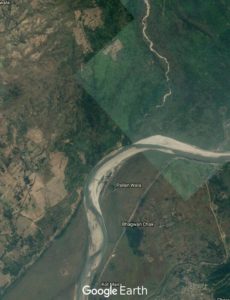
Battle At The Bridge Too Near To Ensure Akhnoor Bridge Remained Too Far
On return from HQ 191 Brigade, Sabu gave a briefing to the Group Officers ,with as many details he had been able to gather. Details were generally next to nothing. On 04 December morning, Recce party from the Group moved to the Bridge site in three x 1 Ton vehicles and got dutifully strafed by a pair of passing Sabers. Luck was on own side. At last light, the rest of the Group arrived at the site. Initially looking lost, they swung into furious digging action, once a sporadic probing enemy artillery fire swept that area. The Group realized that they had neighbours, when own artillery batteries deployed nearby gave a quick short reply. These were the guns of 39 and 216 Medium. Soon an Artillery Observation Officer, Major Ranbir Singh from 39 Medium joined the Group, though some say it was Captain Mallick. Everyone was now desperately waiting for 7 KUMAON and the Squadron of tanks from 72 ARMOUR. By midnight, group was well dug up though there was no sign of the Kumaonis or the tanks. Only a Troop of Deccan Horse (three tanks) had reached the location and deployed close to the Group. Who was going to protect whom was debatable but each was a comforting neighbour to the other.
Group Commander downwards everyone was equally clueless about the ongoing battle west of Tawi and thankfully also about the Command and Control chaos in the entire Divisional Sector. For the Commandos , actually IGNORANCE WAS BLISS. With nothing much to do and being clueless of the gravity of the situation, they were merrily watching the ongoing Diwali in front of them. However Mac could not sit idle and so taking his radio operator Trilok Chand and sahayak Omprakash and one more chap, had waded through the Tawi to a sort of an island in the middle. Hiding in a sarkanda clump he was trying to scan the area in front with his binocular in the semi moonlight night. He got a shock of his life when he saw a patrol of 10 reaching the island from opposite bank and plonking themselves less than 20m from his position. After a few Centuries it seemed (it was just 20 minutes by IST) those chaps speaking with funny accents decided to get up and head back. A few minutes later Mac realized, one of them was still lying around. As the young Balti youth hurriedly got to a sitting position and started putting on his boots which foolishly he had removed some 20 minutes back, he was suddenly grabbed from behind with mouth firmly clamped. By the time Mac and party tied up the prisoner they got another shock …. noise of tank engines from the other bank though quite far off. They just took off for own position giving warning of their return to the Team on radio.
With the prisoner interrogated at the Group HQ , now Cariappa’s boys were ready and waiting to welcome 13 AZAD KASHMIR. Coming into their own country ( and State ), no visa was actually required by the Kashmiris, they could have just walked in waving white flags but instead they were coming with guns. The first attack came at around 0100h. As per an eye witness, at first three jeeps, without headlights crossed the bridge, went about 100 m on the road towards Jaurian, then took a U turn and returned across. 15 minutes later two tanks opened up from the western bank with sporadic fire followed by just a few salvos of artillery, then came out an assault line about a company in strength from the sarkandas on the Northern flank. The attackers seemed as if they were just going through a drill. After all it was supposed to be an abandoned bridge. Their real objective was the high ground further East, near Sahamwan. As a nasty surprise to the attackers suddenly 5 MMGs, three on the tanks and two from the ALPHA opened up upon them. Within no time the attack was repulsed. The enemy Commanders on the western bank were totally confused. As per their recce report done on previous night and earlier intelligence, there was no indian deployment anywhere near the bridge.
HQ 4 AK Brigade was thus totally confused. There was supposed to be no enemy and now suddenly 5 MMGs. Luckily for ALPHA GROUP, Infantry School and War college on both sides of Radcliffe Line follow the same teaching and therefore Commander, 4 AK Brigade assumed that minimum of one infantry battalion was opposing him.
The next attack came at 0200h in the form of a battalion level attack. It commenced with intense artillery barrage followed by a massive assault which nearly managed to reach the forward trenches before being beaten back and repulsed across the Tawi. Miraculously except a few getting scratched by a splinter or two, there were no casualties on our side. Though Group Quarter Master Havildar Risal singh was furious. 4 water pakhals left carelessly in the open had received direct hits and totally destroyed. Senior moved from Team to Team and visited each trench. Junior had taken over the command of No 2 Team though KCP had already reached the location. Ammunition etc were re supplied to each trench and the Group was ready once again.
Commander 4AK Brigade seemed to be in serious trouble. General Iftikhar had really blasted him. So at around 0400h came a full brigade attack with 13 AK and 47 PUNJAB. The artillery was so intense that by itself it should have pulverized the paratroopers completely. Then came the assault, this time from somewhat North westerly direction. As the assault line came within killing zone, Cariappa’s boys opened up with everything. The three tanks too joined in. Own gunners too began to fire disorganizing the enemy in depth. It was do or die, kill or get killed. One wave managed to get into a few vacant trenches in the gap between No. 3 and 2 Teams. The nearest Sub Team had to fall back. A large number of assaulting enemy went beyond too, towards the gunners. Situation was desperate. Senior took a split second decision. Himself an old gunner he called for one of those rare types of artillery fire….. SOS …that is asking own artillery to fire on or very near to own defences. He quickly shouted the code word into the hand set and then passed on very accurate coordinates as corrections. Our artillery fire came down as close as 50 m of own defences.
Gunners rose to the occasion. Firing virtually in a direct mode like a rifle, they had a devastating effect. The enemy assault lines began to disintegrate. During all this, Junior rallied about 10 commandos from the depth and assaulted the trenches occupied by the Pakis. There was hand to hand fighting for a short duration, where situation could have tilted either way. Then suddenly troops of 4 AK Brigade gave up and started retreating. A large number of enemy had been killed. They had to vacate the Mandiala heights on the Western bank too. Luckily our own casualty was just 10 wounded including Captain MA Cariappa.
However quite a large number of Pakis had gone through the gap in our defences and in the darkness some of them reached the battery of 216 Medium and were able to disable 2 of the guns. Then they moved further ahead, realizing their perilous situation only after day break. Most of them met their makers while trying to find their way back to western bank of Tawi, rest went to have a good time at Prisoner Camps of Indian Army. As it came to be known well after the war, that just when Senior was asking for SOS fire, Brigade Major of 4 AK Brigade, was telling HQ23 Division that Chamb Bridge had been captured totally intact!
GQMH (Group Quarter Master Havildar) Risal had by now given up. Not only more pakhals were lost, Pakis had no respect for even the most sacred thing …the Langar …. the cook house was completely destroyed and even the ration storage area had received a direct hit. In Spite of all this at pre dawn STAND TO, in came Paratrooper / Mess Waiter Balbir Singh with few glasses of hot tea together with his trademark smile, offered them to the CO and the Group Commander and to the wounded who were in a position to sip. When someone enquired… Balbir where is your rifle? Balbir in a hurry dropped his tray and ran back to look for his rifle. This Mess waiter kept dropping his tray or glasses like this but kept looking after the Officers of 9, Army commanders of Northern Command, even Sai Baba of Puttaparthi and President of India, till he retired sometime in 1992 or around.
General Iftekhar was furious. He had known that once this bridge was captured then Indian defences West of Tawi would be out flanked and perforce they would withdraw. Road to Akhnoor would be wide open. Finally out of fear or out of shame Col Basharat Raja, CO 13 AK made a final attempt, the fourth attack, where Nk Ram Singh and Hoshiar Singh gave a befitting reply before laying down their life for Alpha Group and 9 PARA and may be also for the Parachute Regiment, Indian Army and India.
CHAPTER V
Till Cease Fire
Entire day of 5th December, Alpha Group was on tenterhooks, finally in the evening arrived 7 KUMAON, a Company of 9 JAT and a Squadron of 72 Armour. Since the bridge remained intact, 191 Brigade kept fighting, 5 SIKH simply would not give up. However on 06 December, Pakis threw in fresh troops into Western Chamb. 191 Brigade started fighting a fierce retrograde battle. By evening troops started to cross over to Eastern bank. Since no one had told the Commandos about this withdrawal, Sabu ordered the Group to deploy the withdrawing troops, at gun point, next to their own defences. Then arose an awkward situation when a few officers had to be stopped too. Brigade HQ confirmed the latest orders for withdrawal. Brig RK Jasbir Singh was one of the last to step on the eastern bank. At around midnight the bridge was blown up as a reserve demolition task. Sabu was told that Alpha Group was now under command 68 Brigade and the bridge was to be defended by him to the last man and the last round in conjunction with 7 Kumaon.
Sabu was by now quite confident that with 7 KUMAON, Company 9 JAT, Squadron of 72 ARMOUR, and supporting Medium Regiments, the position was quite safe. He also knew that incase he took no action, then after the War, our Infantry School and War College, would start teaching that such defensive tasks were meant for the para commandos. Also at Brigade and Division level they would start quoting this as a precedence and start employing the parachute commandos on such tasks as a regular practice. Parachute Infantry and Parachute Commandos would be treated as the same. So he went to the GOC and asked for commando tasks instead. It was accepted and around 1900 h on 07 December Alpha Group was ordered to leave for Pallanwala.
On 7th morning , Group commenced preparation for the move. There was some excitement when Squadron Leader Denzen Killer had to himself eject from his Gnat after shooting down a Saber. Luckily he landed near the paratroopers, though there are no official records with the Group, of Sabu or Senior having presented Denzen with a Para Wing. Move out of Alpha Group from the bridge area was a sight worth watching. As there were hardly any serviceable vehicles left around, the move was to be on foot upto a certain point. However the GQMH was very reluctant to leave anything behind. While Senior was scratching his head, Mac and Bist found an immediate solution. Around 10 to 15 buffaloes from nearby abandoned villages had attached themselves to Alpha Group (or were they persuaded by the commandos belonging to Haryana) and now they were carrying most of the group’s stores. Had any U2s been made available to the Pakis in those days by US, then the Americans would have got a heart attack, wondering about the type of secret weapons on the move.
For the next seven days , Alpha Group kept running around the Sector akin to Fire Brigade running around in Summer months to dowse fires breaking out left, right and centre. First, Group less No 3 TEAM, went to 10 Garhwal location when Raipur and Dharia Crossings were captured by the Pakis. Here in a direct shell hit, Mac lost his radio operator L/ Nk Om Prakash. General Sartaj then passed an order for the Group to infiltrate and re capture Raipur Crossing from behind. However on re capture of Dharia by 68 Brigade, enemy vacated Raipur on its own.
No 3 TEAM led by 2/Lt Bist, meanwhile had gone for a hunting trip to Nadiala, east of Lam. During day time they observed the area in front and at night crossed over. Bang at the selected site there was a melee of sort. Two tanks, having some mechanical problems were in a process of being retrieved. After watching the situation for around 10 minutes from just about 50 m, they fired a round of Rocket Launcher into each of the tanks and like good commandos scooted from there. One tank had a direct hit, while other got a partial hit only. Though the retaliatory MMG fire from a third tank took its toll. Luckily Subedar Bishan Das, Team 2IC, was only slightly wounded. Team was able to reach back safely.
On 11 December, Alpha Group was moved to area Chinotta, 6 to 7 kms North of Pallanwala, to prevent infiltration from the crossing places on Tawi. For next 6 nights, the Group regularly went in for gun raids on suspected gun areas, twice as a Group and four times, Team wise. Each night it turned out to be a WGC (wild goose chase). Then came 17 December and the Cease Fire.
CHAPTER VI
The End
When the advancing elements of 4 Azad Kashmir Brigade reached the area on the west bank of Munnawar Tawi, they were actually clueless of the fact that at the given time and for the next many hours, there was nothing between them and the Akhnoor Bridge except ALPHA GROUP. They still failed to make Akhnoor / Jammu Azad.
At the same time ALPHA GROUP and their associates were blissfully unaware of the fact that apart from them there were no fighting forces behind them on the road between the two bridges. The parachute commandos, the cavalry and the gunners stood firm and became a saviour of Akhnoor & Jammu by giving enough time to General Sartaj Singh to redeploy his forces.
The exploits of Alpha Group and the importance of the battle at Chamb bridge is not known to the country which is hardly surprising, as it is not known to the majority of the Indian Army too, past or present. Since not documenting and highlighting this episode in detail cannot be intentional on part of the concerned Formations, we can only blame the then prevailing chaos, confusion and the fog of war. Nevertheless now the story is here for everyone to read and to judge the importance of the battle on their own. The whole feat was achieved by Alpha Group with sacrifice of 3 killed and 14 wounded and in return they were thanked with a LONE SENA MEDAL to Captain M A Cariappa. However, any time Indian Army or Indian Govt can still dial 9 for assistance without any worries. Many years later I too had the privilege of commanding this ALPHA GROUP albeit renamed as ALPHA TEAM.
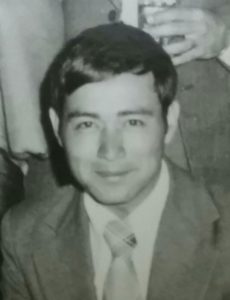
Late Captain Premjit Rockpa, Shaurya Chakra
This Story is dedicated to my immediate Senior in 9, Late Captain Premjit Rockpa, Shaurya Chakra, who had been a great guide and a friend right from day one till his death in 1981 on Mount Nanda Devi after a successful summit assault. We had kept planning all the time to write this Story of Alpha Group, his Group. Then there was his sahayak Sushil Kumar Pathak, a graduate who had enrolled as a paratrooper and turned into a drug addict, whom he kept trying to reform to the last.
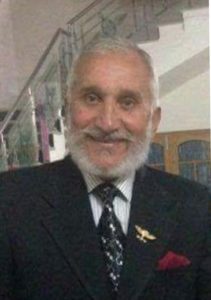
Brigadier Balbir Singh Sambyal, SM
Also must be included my contemporaries who had joined Alpha at that time… Brigadier Balbir Singh Sambyal, SM and Lt Col O M Kuriakose. Samby had been commissioned in Mar 1978 but had to report to Parachute Regimental Centre first and joined the unit only in December ‘78. Whereas due to change in Policy, I had reported directly to the unit on 30 Jun 78. Even when he was just a 2/Lt, Balbir Sahib was a name to be reckoned with right from Samba to Patnitop. Mathew O K who joined in 1979 had three name tabs and kept changing them on regular basis. M O KURIAKOSE, MATHEW OK and the third read OODUMPANATTU.
He was expert in Salesmanship and even those days could get a lightening telephone call through the military exchange to anywhere. Only the GOC – In – C, Northern Command had more priority than him. Though from Kerala, in many a traits he was a worthy successor to Junior. In the unit, he always officiated in my place as the Equipment Officer. Finally in 2003, I got a chance to replace him at Army HQ, when he took premature retirement. He had nearly got himself killed in early part of 1980, when all of us youngsters were pioneering Slithering Drills from helicopters. Due to the injury, he had to leave us and move to 6 PARA. His son is now wearing the Regimental Lanyard



